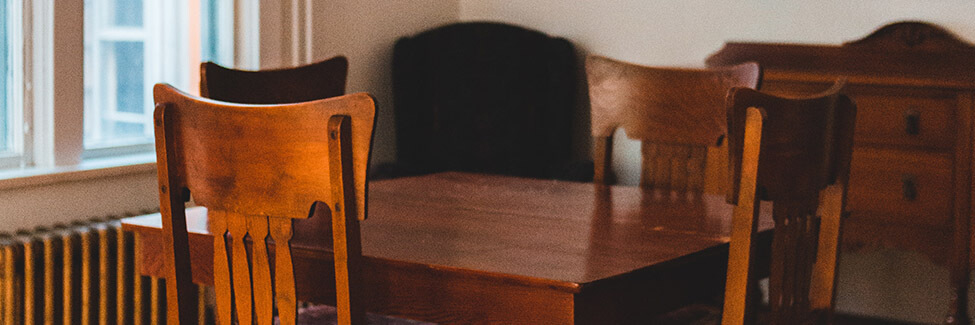
How Humidity Affects Wood Furniture and What to Do About It
Wood is one of the most popular materials for making furniture, and for good reason. It’s reliable, durable, and looks wonderful! Wooden furniture and furnishings are elegant, but they also require special care.
So how can you protect your furniture?
Humidity is the most common enemy of indoor wood. Any extreme change in moisture level can cause damaging shifts in wooden furniture. For example, too much moisture can cause wood to warm or invite fungus. On the other hand, too little moisture can cause cracks that ruin the exterior or cause structural damage.
Quality wood furniture is an investment, and the last thing you want to see is your new table or bed frame ruined because of humidity levels.
Choose and maintain quality furniture
Starting off with high quality wood and craftsmanship is a great first step in protecting against furniture degradation. For long-term value, look beyond particle board material towards solid wood that’s been appropriately treated. Depending on your location, you could go to a retailer like New York Furniture Outlets that specializes in wood furnishings.
Wood that’s been taken care of is more resistant to humidity changes. To properly maintain wooden furniture, be sure to: * Clean regularly * Re-oil and re-wax when necessary * Dust often
Control indoor humidity and temperature levels
Any home with wood furnishings or wood floors (especially parquet flooring) should have consistent humidity. Aim to keep your humidity levels somewhere between 40%-60%. In addition to being bad for wood, any extreme level of humidity can also cause health issues!
Note that you’ll want to be particularly careful about high humidity levels in summer, when you may need a humidifier. And during winter months, be on the lookout for unusually dry air.
Like humidity, air temperature is also important for protecting wood. Keep indoor temperatures around 70°F (or 21°C) for optimal conditions.
Use the right equipment
To regulate humidity and temperature, consider specialized appliances. By maintaining the right environment, you can eliminate unnecessary risks. You’ll also cut down on maintenance frequency for tasks like dusting, polishing, and applying other compounds.
Appliances like air humidifiers can help regulate indoor humidity extremely well, extending the life of your home furnishings along the way. For any home with older wooden furniture (as well as paintings or antiques), humidity is even more important. For proper care and storage of delicate items, appliances are required. Some technologies, like air washing and “cold humidification" are new developments that regulate humidity without condensation or limescale buildup on surfaces (which can sometimes occur with humidifiers using ultrasound or steam). If you’re using a humidifier on wooden furniture, know that an air washer model is probably your best best, since it can be used on wooden surfaces without issues.
Other tips
To maintain the appearance and durability of wood furniture, here are some additional tips to consider:
- Every piece of furniture has a purpose and its own limits (so don’t use your old wooden table as a step stool)
- Keep furniture at least three feet away from any heating elements (radiators, electric heaters, etc.)
- Don’t leave wood furniture in direct sunlight, which can fade colors and even dry it out
- Avoid placing wood furniture near any damp or cold walls to prevent stains, mold, and accelerated aging
- Place furniture on level surfaces to prevent warping, tipping, or unintended movement
- Close furniture doors when not in use
- Evenly distribute any load on furniture, and don’t exceed weight limits
- Secure furniture surfaces from any damage that could be caused by the impact of solid objects, pests, and protruding elements
- Abstain from detergents and abrasive powders since they can damage the exterior of furniture
- Understand manufacturer’s recommendations before using any wood cleaning products
- Put material between any wet, cold, or hot objects on the furniture (get an extra set of coasters if you need to!)
- Don’t put wooden furniture on heated floors without using heat-insulating elements – failing to do so can lead to excessive drying of the wood in the lower part of the furniture and eventual warping and cracking
- Periodically adjust hinges, locks, and other fittings, and tighten fasteners, nuts, bolts, screws, etc.
Taking care of wood isn’t difficult, but it does require consistency. Once maintenance becomes a habit, you’ll spend little time each month keeping up your furniture without an unfortunate surprise related to humidity. When protected, your furniture will serve you for a long time.
Still have questions? Ask an HVAC expert directly via chat or phone.
Published on 2021-01-27 by Ben Travis
Last updated on 2021-01-27


